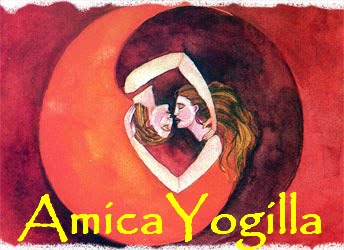Today we look at the various methodologies of early yoga traditions and we answer the question "how", "how can enlightenment be attained".

All forms of yoga adopt meditation as their primary technique to attain a higher awareness, a state beyond disturbance, but each school places a different emphasis upon it, which is prompted by a different weltanschauung.
Buddhists and Jainists agree that life is ultimately a source of pain and sorrow. Suffering arises from the frustrated desire (tŗşņa) to keep a comfortable life. The only way to liberate the self from the eternal cycle of birth, death (= suffering), rebirth (samsara) is to stop creating karma. Jainists practice self control, renunciation, discipline and observance as a means to reduce karma to a minimum (the less you do the less you create). This requires a great deal of inner strength and concentration which builds up heat (tapas), which, in turns, enlightens the soul. The Buddhists’ approach is more moderate. They believe extreme renunciation is a threat to the body's wellbeing and therefore an obstacle to spiritual development. Right understanding, intention, ethical action (i.e. positive karma) and meditation (samadi) become the values of the Buddhist *middle way*. Without turning their back on society, Buddhists use meditation as their prime ascetic practice to achieve nirvana, the extinction of all phenomena.
Karma yogis arrive at a new awareness: they appreciate that there is nothing wrong with actions per se and that the problem is in the ego becoming the main matrix. Thus, if an action is egoless, it can still lead to enlightenment as it does not produce karma. Karma yogis introduce a social dimension to the yoga practice. Bhakti yogis identify a divine quality in all things. If god is everything, then everything is god, human beings included. Through meditation based on love and devotion to god, Bhakti yogis get closer to their own divine essence and thus to god.
Unlike its predecessors, Tantric philosophy is integrative: for the first time, all social classes are welcome and, although it is still a male-dominated environment, women make their appearance. The Tantric tradition inherits the Bhakti’s worldview whereby the universe is regarded as the divine play of god. Liberation is therefore possible alongside social involvement. The accent is shifted from the action to the experience: it is not important what you do or what you have, the key is how you deal with the various aspects of life including the material aspects. If you behave ethically without harming others, you can still reach transcendence through *expansion*. Three branches of yoga arise within the Tantric tradition: Laya, Mantra and Kundalini Yoga (precursor of modern Hatha yoga).
In Laya, the ego expands through dissolution into the universe, thus entering into a blissful dimension. Mantra yogis use chant’s vibrations to achieve a higher state of deep concentration at which the divine form becomes manifest. In Kundalini, metaphysics made an important discovery: the potential lies in our body, made of matter and subtle energy. The serpent’s vital energy (kundalini-shakti) is latent in us and needs to be awakened. The body should therefore be respected and nurtured as it is the tool for self-transcendence. Āsanas, bandhas, prāņāyāma, meditation and mantras are the various techniques deployed by modern yogis to stimulate the vital energy, whose movements affect our mind and expand our consciousness.


